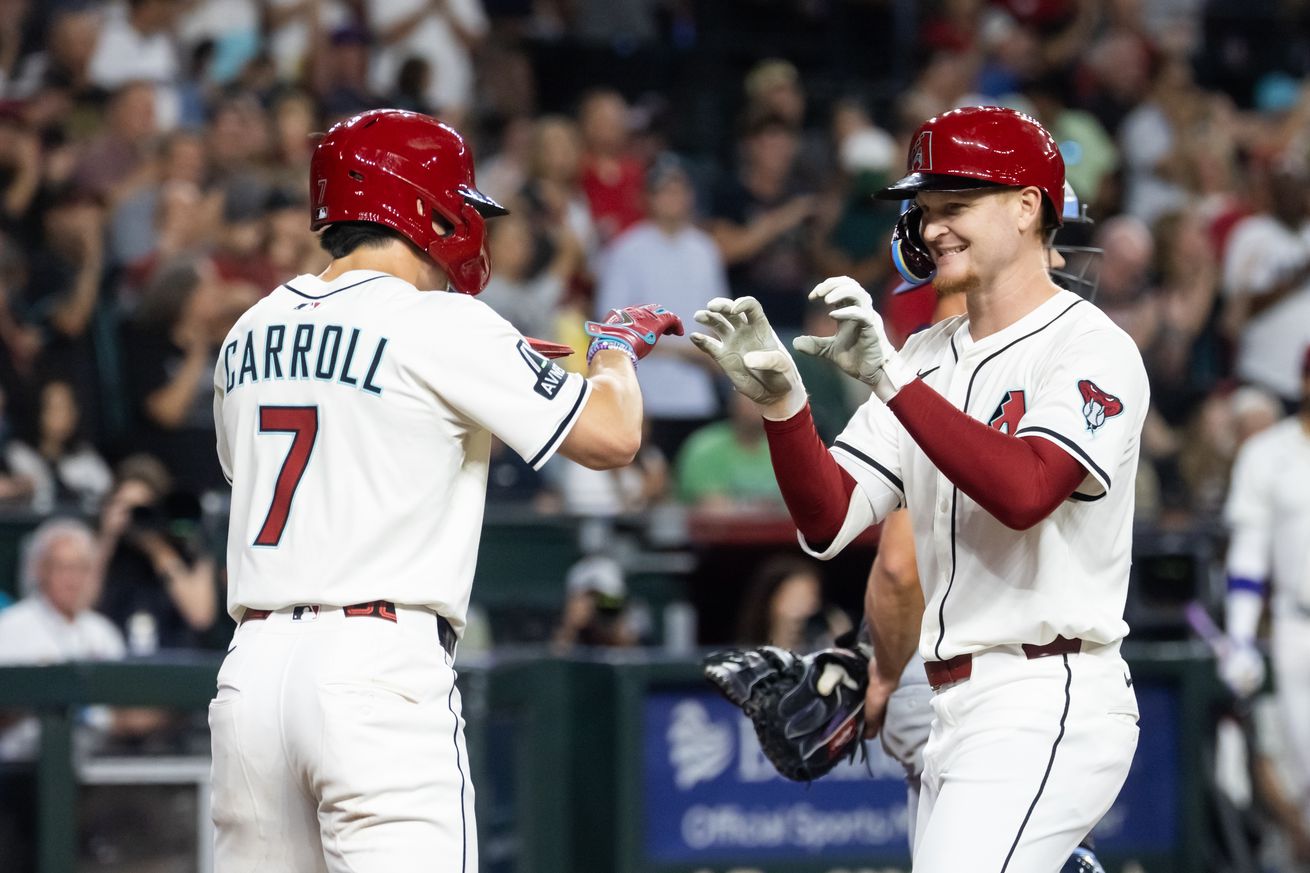
Who are the luckiest – and unluckiest D-Backs through the first month?
Introduction
Luck is a fickle thing in baseball. Contemporary baseball has become understandably obsessed with both bat speed and resulting exit velocity as they both have strong, positive correlation with good batting results. It’s just one small part on the industry-wide move in tracking nearly every biomechanical part of the game. But for all the unsurprising relationship between the two variables, it’s not hard to find times when hard hit balls go directly into a defender’s glove while soft liners inexplicably find outfield grass or go for infield hits. Some of that phenomenon comes from the quality of contact, defensive ability, and how much the defense is shifted. But sometimes it’s also just pure, dumb luck that comes from the vagaries of physics and the randomness of the universe. Ordinarily, those competing forces balance themselves out across the marathon of a baseball season, but in the short-term, it can produce some wonky results. So, with that in mind, I thought it might be worthwhile to take a look at which of the D-Backs have been the luckiest and unluckiest with their results as we approach the end of the first month of the season.
Obviously, we can’t exactly quantify luck (otherwise I’m sure it would have been measured and somehow packaged for consumption already). But our friends over at Baseball Savant have developed a handy tool that takes many of the aforementioned factors into account to try and calculate several “expected” statistical categories including batting average, slugging, and ERA. So, as a result, we can look at the differences between those expected statistics and their actual counterparts to at least get a rough estimate of how lucky an individual player has been. This exercise isn’t meant to minimize the players’ efforts, but rather take a deeper look into how sustainable some of the team’s performances are moving forward.
The Lucky
Pavin Smith
This might not be a huge shocker as Pavin Smith has had by far the best month of his career, posting a league-leading slash line of .383/.500/.733 for an absolutely absurd 1.233 OPS. It might be one of the best offensive months by a Diamondback in franchise history and it ordinarily would be the lead story if it weren’t for the equally torrid start his teammate Corbin Carroll has posted. But for all the (deserved) accolades and praise Smith has accumulated so far – especially from doubters like myself – there are some signs that the start may not be sustainable for the whole season. There is nearly a 100 point differential between his expected batting average (.298) and his actual batting average (.397) with a 150 point differential between his slugging numbers (.610 and .759 respectively). For context, that difference for batting average is the highest in the entire league and his slugging differential is fifth-highest in the league. Regardless, even if he were to fall back towards those expected numbers, it would mark some of his best numbers in his career.
Brandon Pfaadt
Through the first few turns of the rotation, Pfaadt has undoubtedly been the best starter on the team with an ERA under three (2.73), a WHIP just a hair over one (1.011), and a SO/BB walk rate approaching five (4.60). Indeed, he is the only rotation member with an above average ERA+ at 149 so far. But there are some warning signs that the youngster may be getting more lucky so far with a FIP of 4.38 well above his stellar ERA, which indicates opponents are having their balls in play being turned into outs more than one would expect. Baseball Savant agrees as his expected ERA (5.32) dwarfs his actual ERA by nearly three runs while the batting average and slugging differentials show similar patterns. The D-Backs need Pfaadt to continue to excel while the veteran-laden rotation figures out their struggles.
The Unlucky
Gabriel Moreno
On the other side of the spectrum from Smith and Carroll’s blazing starts to the season is Lourdes Gurriel Jr who seemingly cannot buy a hit right now. Through the first three weeks of the season, Gurriel has just 15 hits, though nearly half of them were for extra bases. Even with that second part though, the veteran holds a woeful .172/.194/.345 slash line to this point in the season. However, there are still some positive signs undergirding those putrid topline numbers as he has been the antithesis of Smith’s expected differential. Gurriel owns an 80-point difference in batting average (.171 actual versus .250 expected) and an 88-point difference in slugging (.354 versus .442 respectively). Across the league, those differences land Gurriel in the “top” 15 of the league for batting and somewhere in the middle of the pack for slugging. At the moment, he is just not making much quality contact with both a barrel % and hard-hit % just under the 50th percentile. That inability to find quality contact makes it that much more difficult to get better results with balls in play. We just have to hope that he can start to turn the ship around slowly but surely.